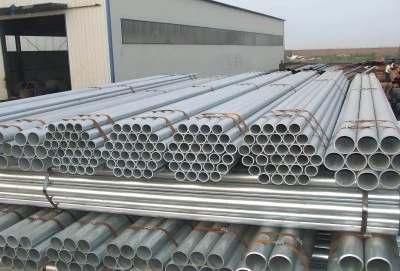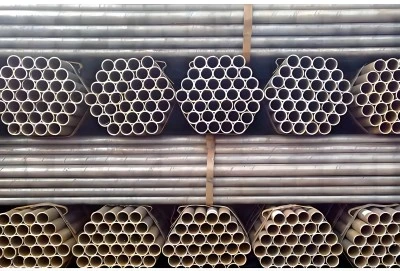When it comes to selecting the right pipes for various applications, understanding pressure ratings is crucial. AS1074 pipes, widely used in Australian plumbing and water supply systems, are known for their reliability and performance. In this comprehensive guide, we'll delve into the intricacies of pipe pressure ratings, exploring how they're determined and what factors influence them. Whether you're a professional plumber, engineer, or simply interested in the technicalities of pipe systems, this article will provide valuable insights into pressure ratings based on pipe series, temperature considerations, and calculations using pipe dimensions and material properties.
|
|
|
Pressure Ratings: The Foundation of Pipe Performance
Pressure ratings are fundamental to the selection and application of pipes in various systems. For AS1074 pipes, these ratings indicate the maximum internal pressure that the pipe can safely withstand under normal operating conditions. Understanding these ratings is essential for ensuring the longevity, safety, and efficiency of piping systems.
AS1074 pipes are typically made from mild steel and are used for conveying water and other non-aggressive fluids. The standard covers a range of pipe sizes and thicknesses, each with its own pressure rating. These ratings are determined based on factors such as the pipe's wall thickness, diameter, and the material's yield strength.
It's important to note that pressure ratings are not arbitrary numbers but are calculated based on specific formulas and safety factors. The Australian Standard AS1074 provides guidelines for these calculations, ensuring that pipes meet the necessary safety and performance requirements for their intended use.
When selecting AS1074 pipes for a project, engineers and contractors must consider not only the maximum operating pressure of the system but also potential pressure surges, temperature variations, and the specific application requirements. This comprehensive approach to pipe selection helps prevent failures and ensures the long-term reliability of the piping system.
Pressure Ratings Based on Pipe Series and Temperature
AS1074 pipes are classified into different series, each with its own set of pressure ratings. These series are typically denoted by letters such as A, B, C, and D, with each series having a different wall thickness for a given nominal size. The pressure rating of a pipe increases with wall thickness, meaning that pipes in series D generally have higher pressure ratings than those in series A for the same nominal size.
Temperature plays a significant role in determining the actual working pressure of AS1074 pipes. As temperature increases, the strength of the pipe material typically decreases, which in turn affects its pressure-bearing capacity. The standard provides temperature derating factors that must be applied to the base pressure rating to determine the maximum allowable working pressure at elevated temperatures.
For example, a pipe that has a pressure rating of 1600 kPa at 20°C might have a reduced rating at higher temperatures. The exact reduction depends on the specific temperature and the material properties of the pipe. Engineers must consider these temperature effects when designing systems that operate at elevated temperatures or in environments with significant temperature fluctuations.
It's also worth noting that while AS1074 pipes are primarily designed for water services, they may be used for other fluids as well. However, when used for fluids other than water, additional factors such as chemical compatibility and fluid properties must be taken into account when determining the appropriate pressure rating.
Pressure Calculation Based on Pipe Dimensions and Material Properties
The pressure rating of AS1074 pipes is not just a given value but can be calculated based on the pipe's dimensions and material properties. This calculation is crucial for engineers and designers who need to verify the suitability of a pipe for specific applications or when dealing with non-standard sizes or conditions.
The basic formula for calculating the pressure rating of a pipe is derived from the hoop stress equation: P = (2 * S * t) / (D - t) where: P = Pressure rating S = Allowable stress (based on material properties) t = Wall thickness D = Outside diameter
This formula takes into account the pipe's geometry and the material's strength to determine the maximum pressure it can safely withstand. The allowable stress (S) is typically a fraction of the material's yield strength, incorporating a safety factor to account for manufacturing variations and other uncertainties.
For AS1074 pipes, the material properties are standardized, which simplifies the calculation process. However, it's important to note that the actual pressure rating may be lower than the calculated value due to factors such as manufacturing tolerances, welding effects (for welded pipes), and the previously mentioned temperature considerations.
Engineers often use specialized software or tables provided by manufacturers to quickly determine pressure ratings for standard pipe sizes. However, understanding the underlying calculations is crucial for ensuring the accuracy of these tools and for addressing unique situations that may not be covered by standard tables.
It's also worth noting that while pressure calculations provide a theoretical maximum, the actual working pressure should always be lower to account for safety margins, potential pressure surges, and long-term durability considerations. Industry standards and local regulations often dictate the specific safety factors that should be applied in different applications.
About Longma Group Limited
Understanding pressure ratings is essential for anyone involved in the design, installation, or maintenance of water supply and plumbing systems. By considering factors such as pipe series, temperature effects, and material properties, engineers and contractors can ensure that the selected pipes meet the required performance and safety standards for their specific applications.
As we've explored in this article, pressure ratings are not just static numbers but dynamic values that depend on various factors. The ability to calculate and interpret these ratings based on pipe dimensions and material properties empowers professionals to make informed decisions and design robust, efficient piping systems.
Longma Group Limited (LONGMA GROUP) is among China's foremost ERW/LSAW steel pipe manufacturers, established in 2003. By the end of 2023, the company's annual output surpassed 1,000,000 tons. This article spotlights its AS1074 pipe product. The product features an outer diameter ranging from 1/4" to 6" and a thickness of SCHSTD-SCHXXS. It has a stock quantity of 10-50 tons and an annual production capacity of 50-100 tons. For inquiries, please contact info@longma-group.com.














